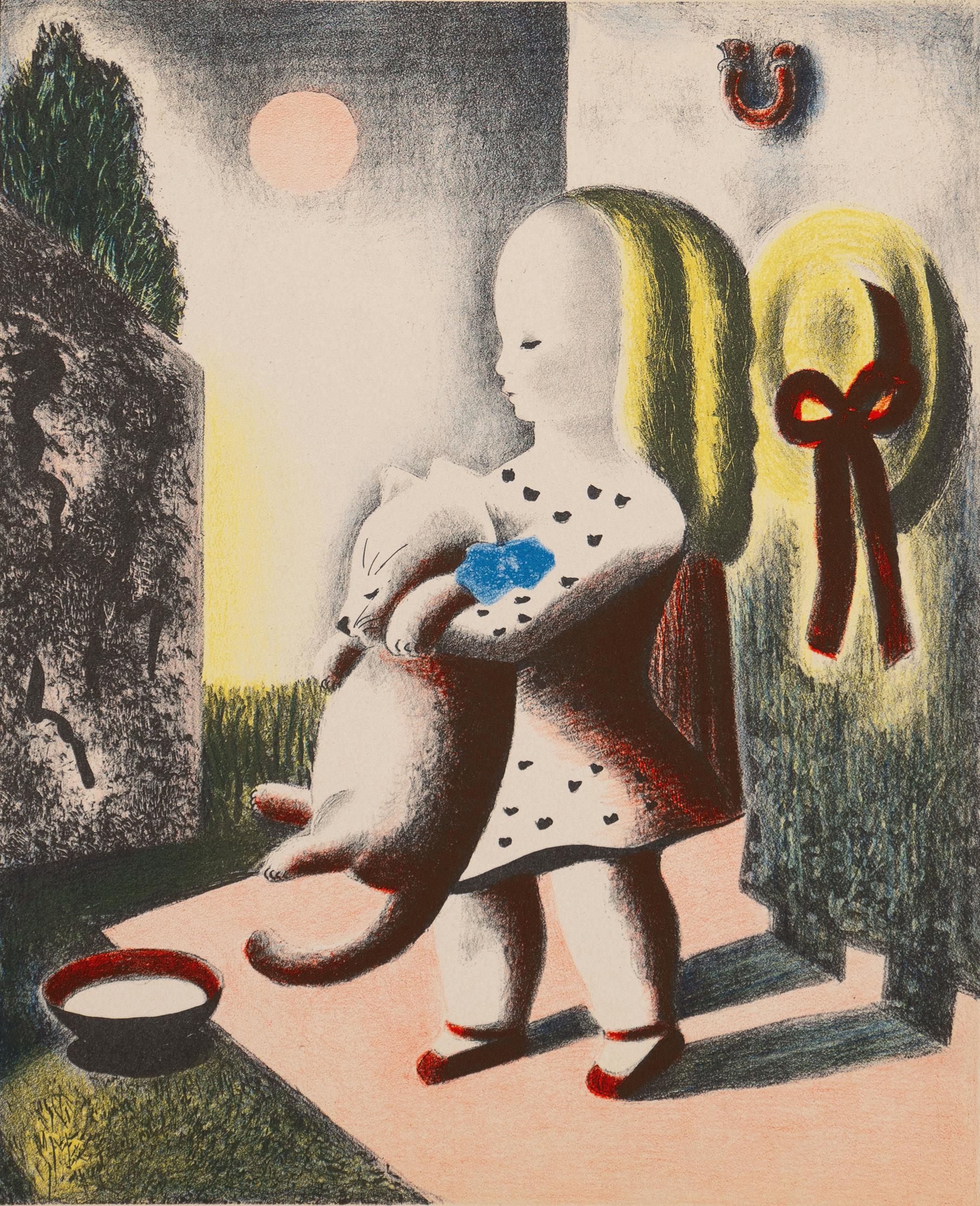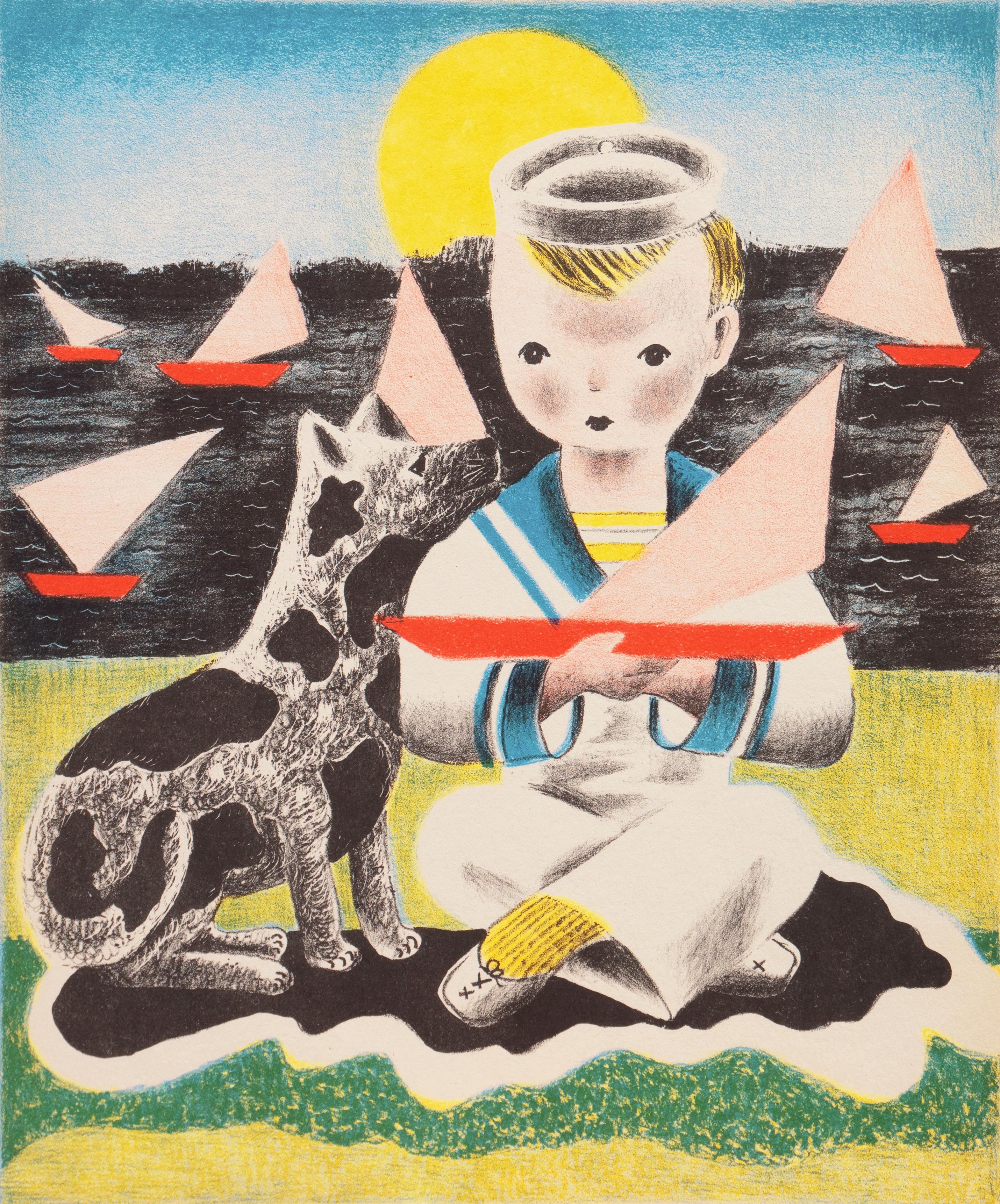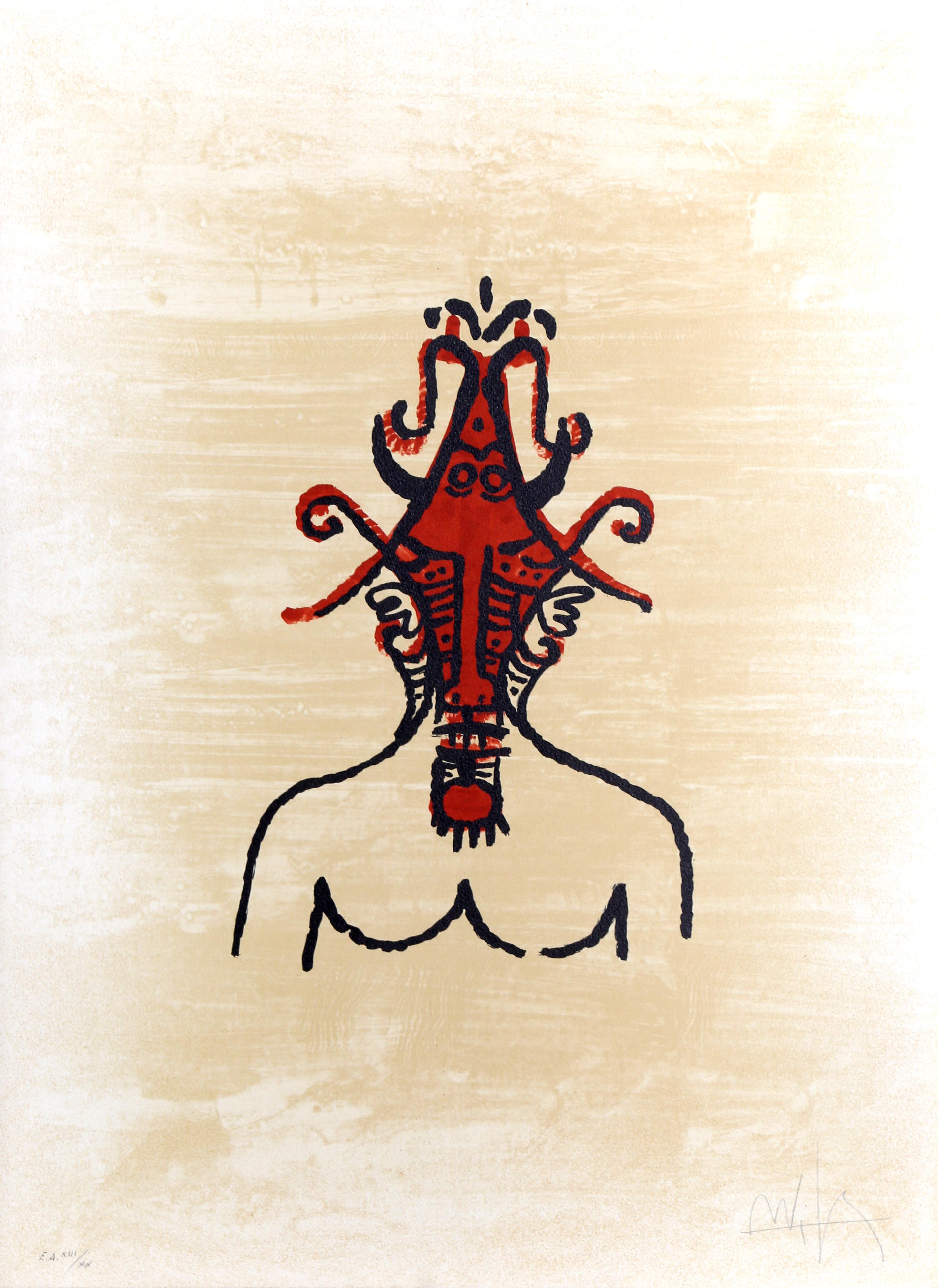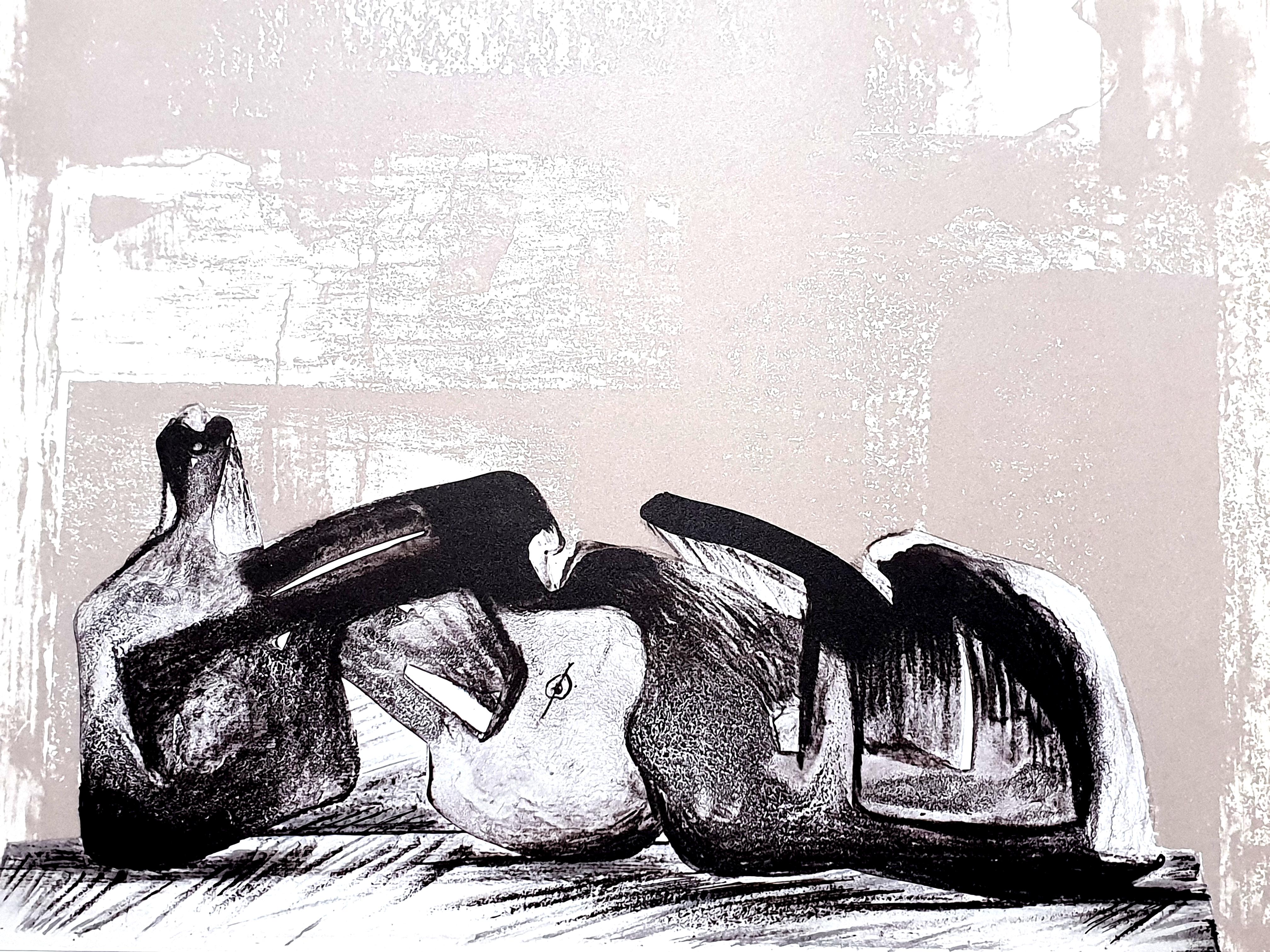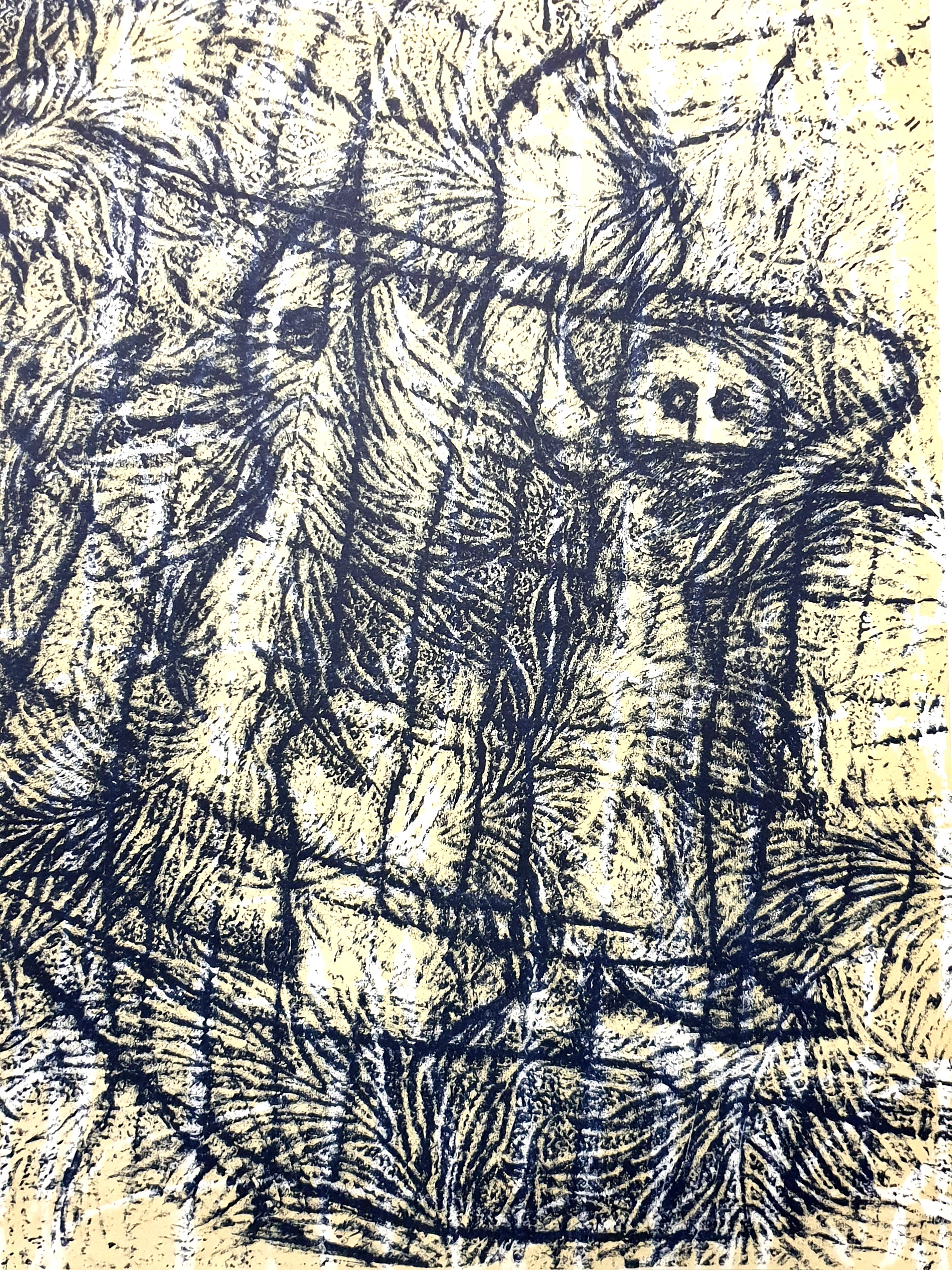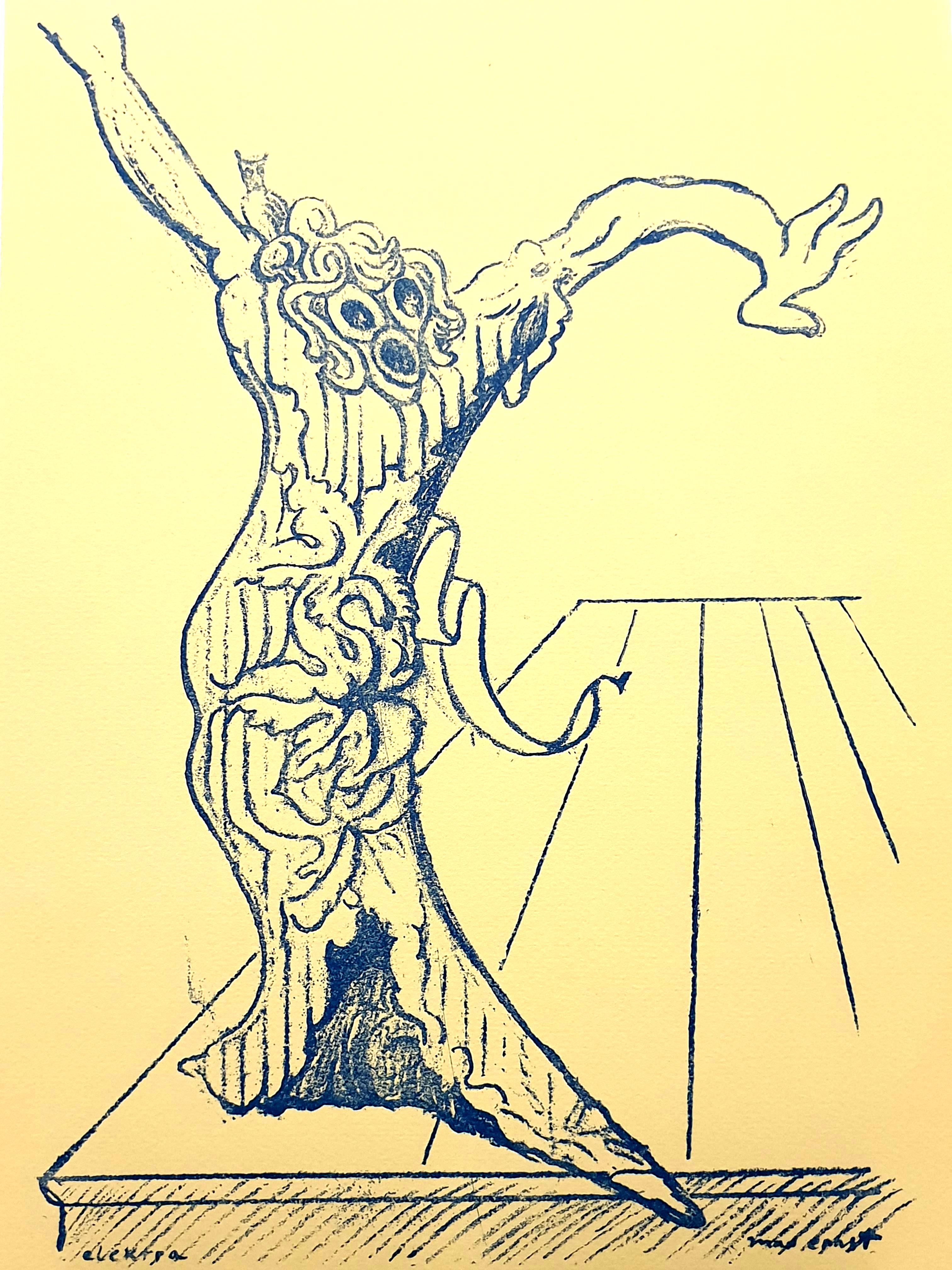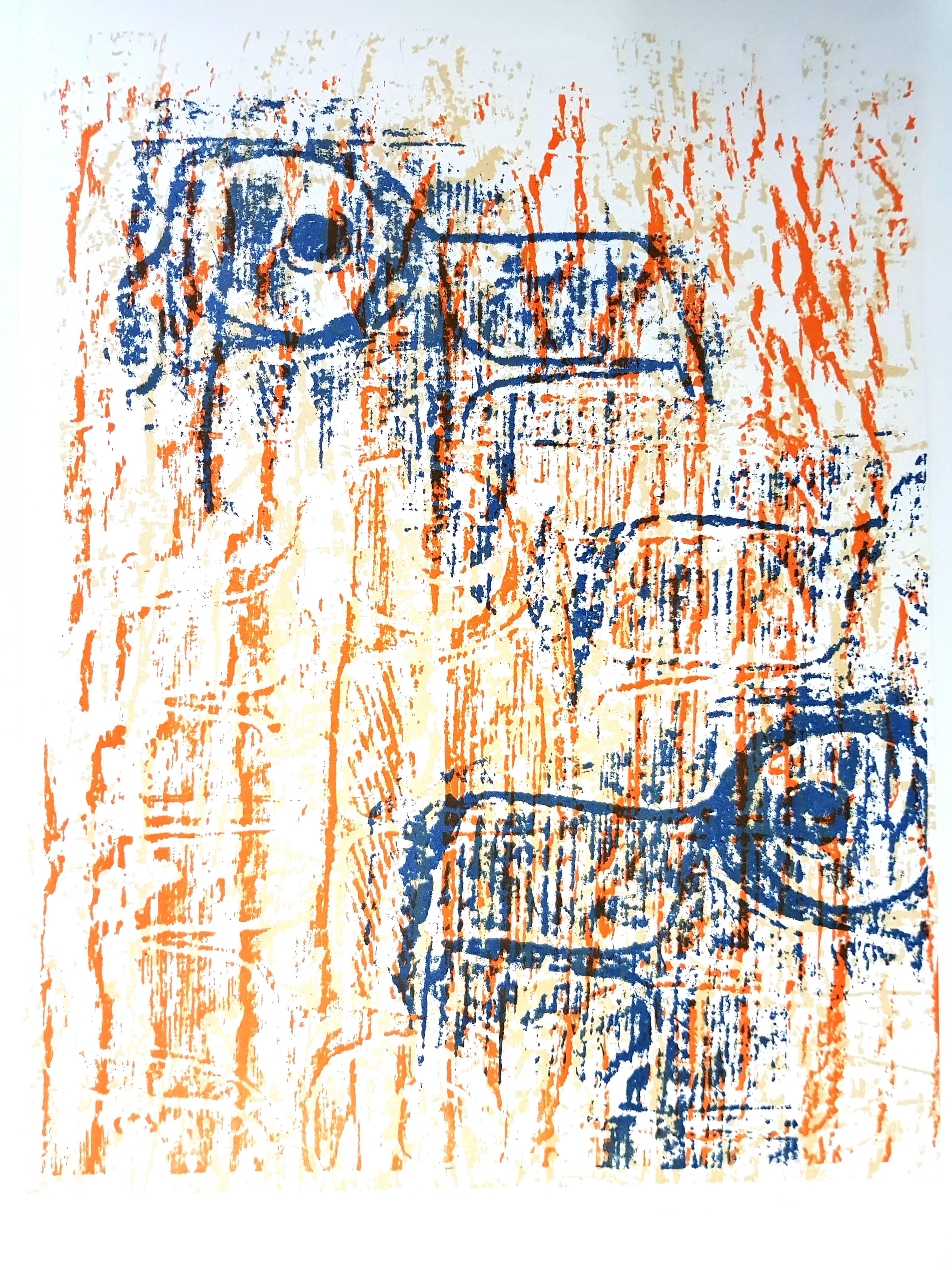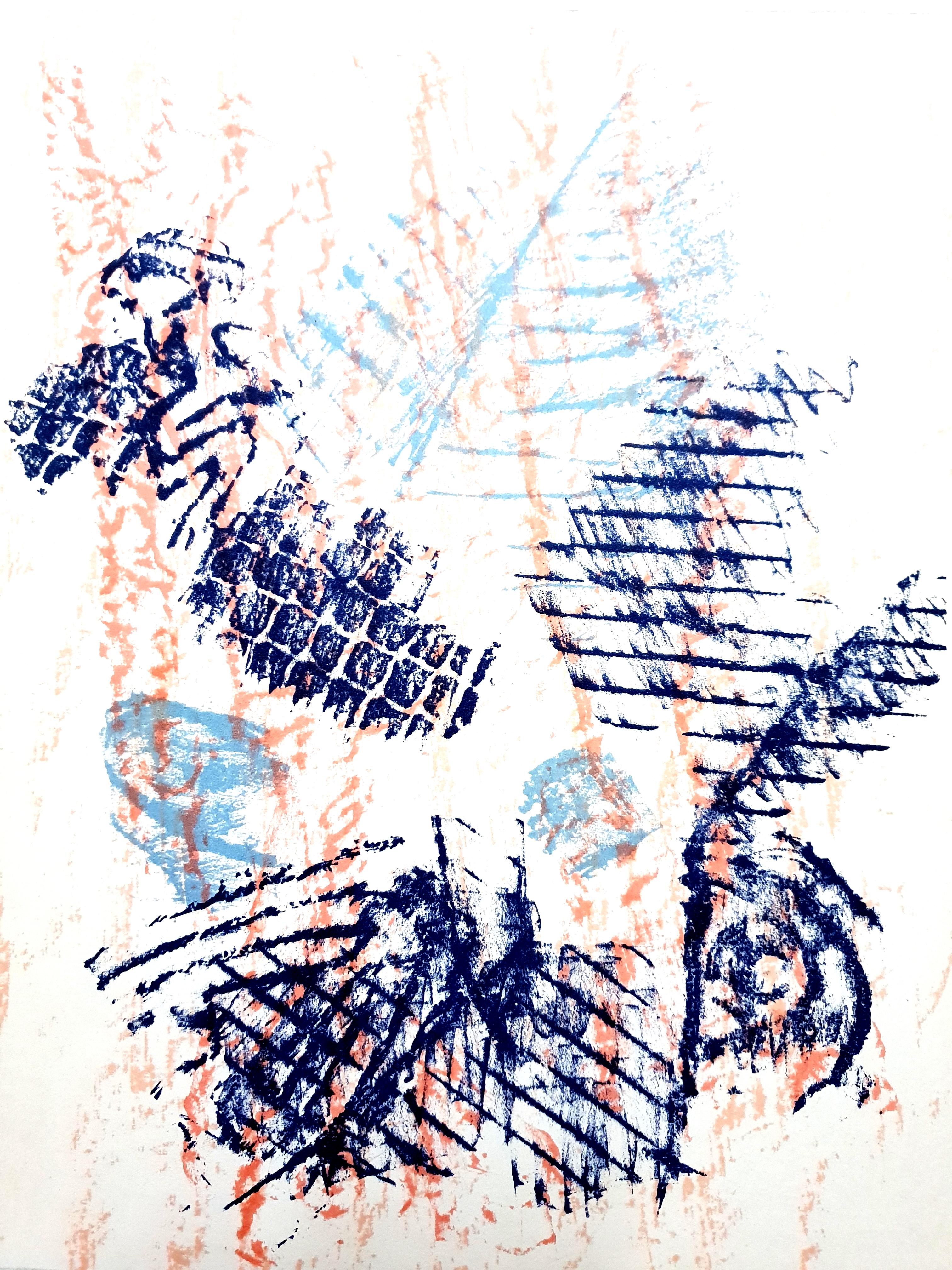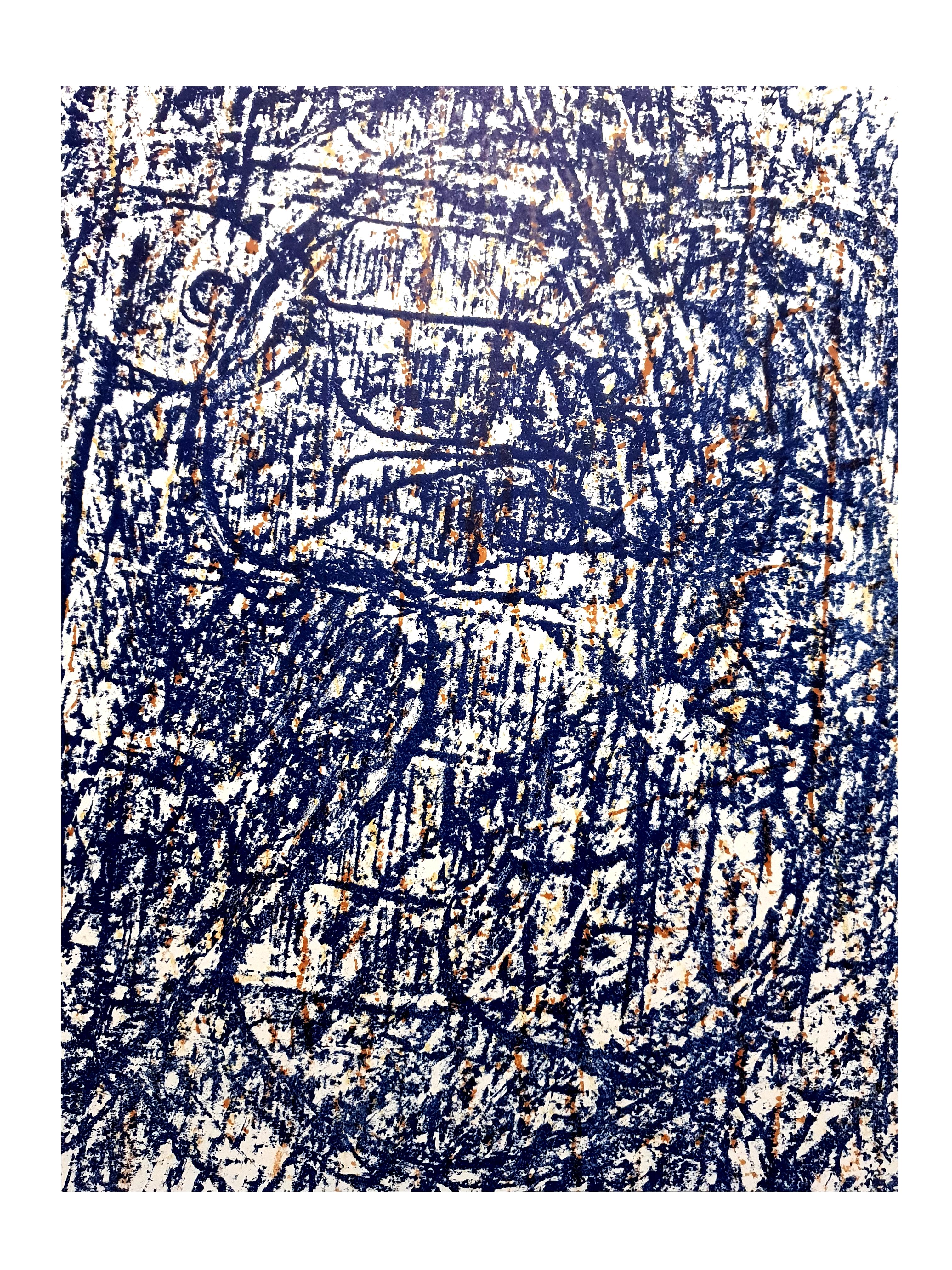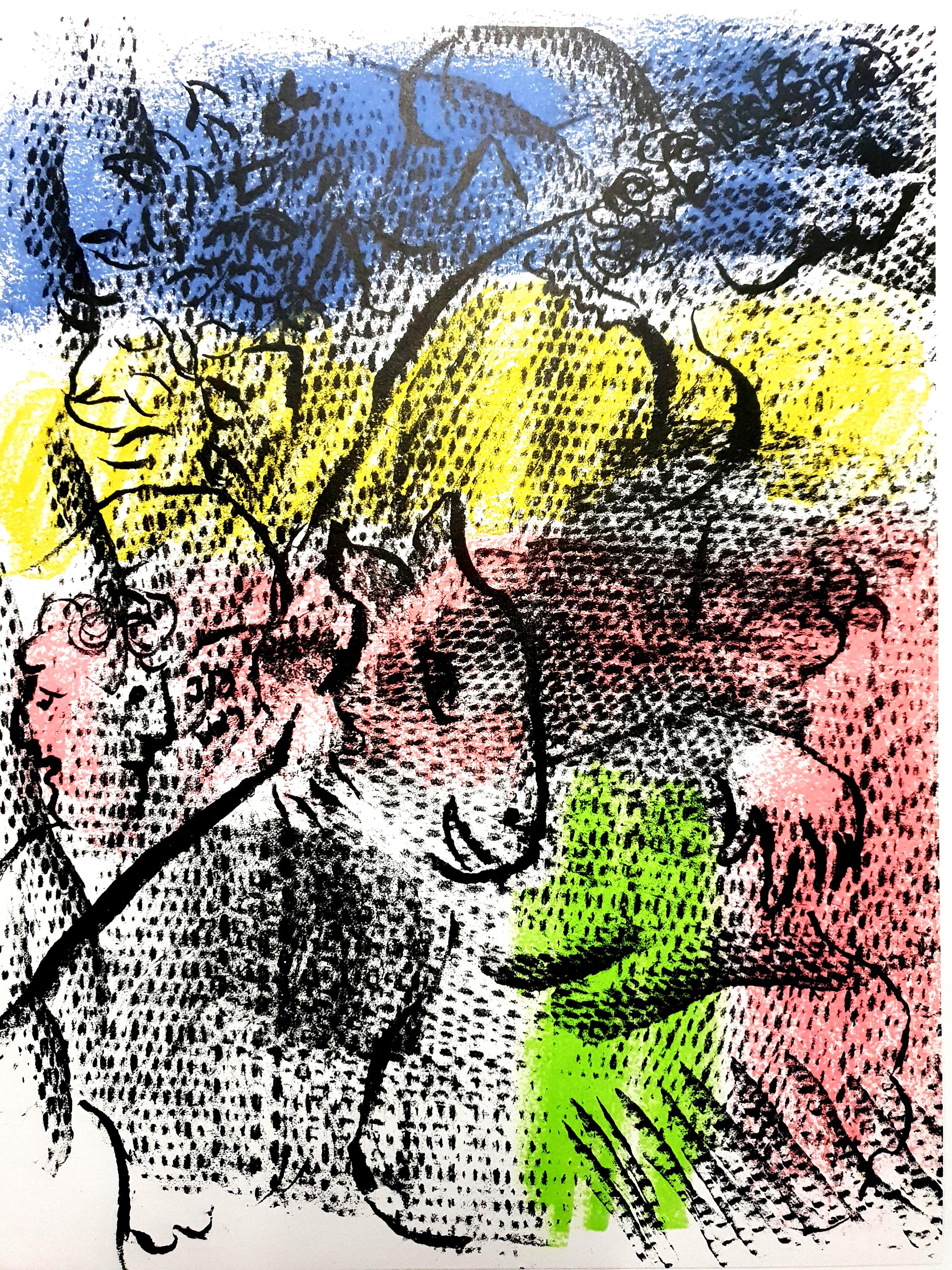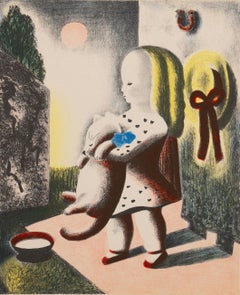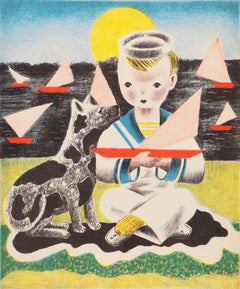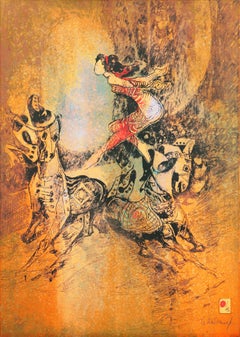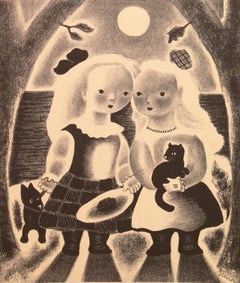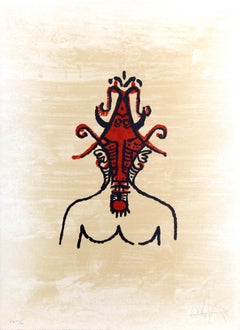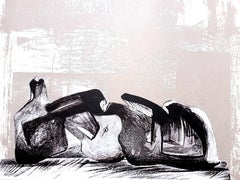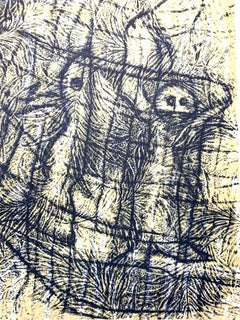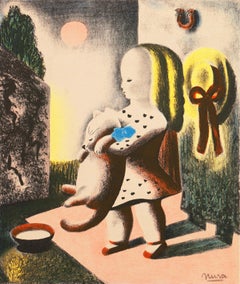
'Anabel & Millicent', Art Deco, Woman Artist, AIC, ASL, Paris, Salon d'Automne
View Similar Items
Want more images or videos?
Request additional images or videos from the seller
1 of 10
Nura Ulreich'Anabel & Millicent', Art Deco, Woman Artist, AIC, ASL, Paris, Salon d'AutomneCirca 1935
Circa 1935
About the Item
- Creator:Nura Ulreich (1899 - 1950, American)
- Creation Year:Circa 1935
- Dimensions:Height: 10.5 in (26.67 cm)Width: 8.5 in (21.59 cm)
- Medium:
- Movement & Style:
- Period:
- Condition:toning; unframed; shows well.
- Gallery Location:Santa Cruz, CA
- Reference Number:1stDibs: LU3444751142
Nura Ulreich
Nora Woodson Ulreich was born in 1899 in Kansas City, Missouri, and was known professionally as “Nura.” She was a painter, printmaker, author, and illustrator, particularly of children’s books. Ulreich studied at the Kansas City Art Institute, the Chicago Academy of Fine Arts, and the Art Students League in New York. She also studied in Paris where she met her Hungarian-born husband, fellow artist Eduard Buk Ulreich, and first exhibited at the Théâtre des Champs Elysées in 1926. Her style was a studied but naïve form of modernism and she often portrayed seemingly innocent views of children and their pets. Nura was a strong believer in Christian Science and sometimes included spiritual motifs in her whimsical pieces with an Art Deco-inspired palette. Nura frequently collaborated with Edward and their combined works often use the moniker “Bukannura.” In 1927, their work was exhibited at the Dudensing Gallery on 57th Street in New York. Eduard was also a muralist who completed commissions for the Treasury Department’s Section of Fine Arts between 1937 and 1940. Both Nura and Eduard are listed in Who Was Who in American Art and all other standard references.
About the Seller
5.0
Platinum Seller
Premium sellers with a 4.7+ rating and 24-hour response times
Established in 1982
1stDibs seller since 2013
720 sales on 1stDibs
Authenticity Guarantee
In the unlikely event there’s an issue with an item’s authenticity, contact us within 1 year for a full refund. DetailsMoney-Back Guarantee
If your item is not as described, is damaged in transit, or does not arrive, contact us within 7 days for a full refund. Details24-Hour Cancellation
You have a 24-hour grace period in which to reconsider your purchase, with no questions asked.Vetted Professional Sellers
Our world-class sellers must adhere to strict standards for service and quality, maintaining the integrity of our listings.Price-Match Guarantee
If you find that a seller listed the same item for a lower price elsewhere, we’ll match it.Trusted Global Delivery
Our best-in-class carrier network provides specialized shipping options worldwide, including custom delivery.More From This Seller
View All'Anabel & Millicent', Art Deco, Woman Artist, AIC, ASL, Paris, Salon d'Automne
By Nura Ulreich
Located in Santa Cruz, CA
A mid-century, stone lithograph titled 'Anabel & Millicent' by Nura Woodson Ulreich (American, 1899-1950), created in 1943 and with certification of authenticity stamped verso. Accom...
Category
1930s Surrealist Figurative Prints
Materials
Paper, Lithograph
'Edward', Woman Artist, PAFA, Art Students League, Smithsonian, Art Deco Figural
By Nura Ulreich
Located in Santa Cruz, CA
A color, stone lithograph titled 'Edward' by Nura Woodson Ulreich (American, 1899–1950) stamped verso with certification of authenticity. A crisp and fresh image from 'Nura's Childre...
Category
1940s Surrealist Figurative Prints
Materials
Paper, Lithograph
'Equestrian Actress', Modernism, Circus, Vietnamese, French, Horse, Acrobats
By Hoi Lebadang
Located in Santa Cruz, CA
Signed lower right, 'Lebadang' and with number and limitation, 163/215, lower left.
Also known as Dang Lebadang (Vietnamese-French, 1922-2015) this not...
Category
1960s Modern Animal Prints
Materials
Paper, Lithograph
'Peggy and Dot', Art Deco Sisters, Woman Artist, AIC, Paris, Salon d'Automne
By Nura Ulreich
Located in Santa Cruz, CA
Signed lower right 'Nura' for Nura Woodson Ulreich (American, 1899–1950) and created circa 1935; additionally titled lower left, 'Peggy and Dot' with numb...
Category
1940s Art Deco Figurative Prints
Materials
Paper, Lithograph
'Autumn', Hand-colored Lithograph, listening to music under the tree
Located in Santa Cruz, CA
An early twentieth-century, hand-colored lithograph showing an idyllic scene of two young lovers in medieval dress seated in a rural bower beneath fruit...
Category
1920s Romantic Animal Prints
Materials
Lithograph, Paper
'Happy Tidings', Geisha, Holding a Fan, Receives a White Crane, Silk Kimono
By Miharu Lane
Located in Santa Cruz, CA
Signed lower center, 'Miharu Lane' (Japanese-American, born 1948), titled, 'Happy Tidings' and with number and limitation, '193/350'. Paper dimensions: 19 x 24 inches.
Miharu Lane ...
Category
1990s Contemporary Animal Prints
Materials
Paper, Lithograph
You May Also Like
El Casquee (She with Helmet), Lithograph by Wifredo Lam
By Wifredo Lam
Located in Long Island City, NY
El Casquee (She with Helmet) from the Pleni Luna Suite
Wifredo Lam, Cuban (1902–1982)
Date: 1974
Lithograph, signed and numbered in pencil
Edition of 72/262
Size: 25 x 19.5 in. (63.5...
Category
1970s Surrealist Figurative Prints
Materials
Lithograph
El Ultimo Viaje Del Buque Fantasma, Lithograph by Wifredo Lam
By Wifredo Lam
Located in Long Island City, NY
El Ultimo Viaje Del Buque Fantasma by Wifredo Lam, Cuban (1902–1982)
Year: 1976
Lithograph, signed and numbered in pencil
Edition of EA XIII/XX
Size: 30 x 21.75 in. (76.2 x 55.25 cm)
Category
1970s Surrealist Figurative Prints
Materials
Lithograph
Henry Moore - Original Lithograph
By Henry Moore
Located in Collonge Bellerive, Geneve, CH
Henry Moore - Original Lithograph
1977
Dimensions: 32 x 24 cm
From the art review XXe siècle
Unsigned and unumbered as issued
Category
1970s Surrealist Animal Prints
Materials
Lithograph
Max Ernst - Composition - Original Lithograph
By Max Ernst
Located in Collonge Bellerive, Geneve, CH
Max Ernst - Composition - Original Lithograph
1958
Dimensions: 32 x 24 cm
XXe siècle
Unsigned and unnumbered, as issued
Max Ernst was born in Bruhl, a place near Cologne, in Germany. He was raised in a strict Catholic family, and both of his parents were disciplinarians who were dedicated to training their children into God-fearing and talented individuals. Although his father was deaf, Ernst learned so much from him, particularly when it comes to painting. In fact, much of his early years were lived under the inspiration of his father who was also a teacher. He was the one who introduced painting to Ernst at an early age.
In 1914, Ernst attended the University of Bonn where he studied philosophy. However, he eventually dropped out of school because he was more interested in the arts. He claimed that his primary sources of interest included anything that had something to do with painting. Moreover, he became fascinated with psychology, among other subjects in school.
Primarily, Ernst's love for painting was the main reason why he became deeply interested with this craft and decided to pursue it later on in his life. During his early years, he became familiar with the works of some of the greatest artists of all time including Claude Monet, Paul Cezanne and Vincent van Gogh. He was also drawn to themes such as fantasy and dream imagery, which were among the common subjects of the works of Giorgio de Chirico.
During World War I, Ernst was forced to join the German Army, and he became a part of the artillery division that exposed him greatly to the drama of warfare. A soldier in the War, Ernst emerged deeply traumatized and highly critical of western culture. These charged sentiments directly fed into his vision of the modern world as irrational, an idea that became the basis of his artwork. Ernst's artistic vision, along with his humor and verve come through strongly in his Dada and Surrealists works; Ernst was a pioneer of both movements.
It was Ernst's memories of the war and his childhood that helps him create absurd, yet interesting scenes in his artworks. Soon, he took his passion for the arts seriously when he returned to Germany after the war. With Jean Arp, a poet and artist, Ernst formed a group for artists in Cologne. He also developed a close relationship with fellow artists in Paris who propagated Avant-Garde artworks.
In 1919, Ernst started creating some of his first collages, where he made use of various materials including illustrated catalogs and some manuals that produced a somewhat futuristic image. His unique masterpieces allowed Ernst to create his very own world of dreams and fantasy, which eventually helped heal his personal issues and trauma. In addition to painting and creating collages, Ernst also edited some journals. He also made a few sculptures that were rather queer in appearance.
In 1920s, influenced by the writings of psychologist Sigmund Freud, the literary, intellectual, and artistic movement called Surrealism sought a revolution against the constraints of the rational mind; and by extension, they saw the rules of a society as oppressive. Surrealism also embraces a Marxist ideology that demands an orthodox approach to history as a product of the material interaction of collective interests, and many renown Surrealism artists later on became 20th century Counterculture symbols such as Marxist Che Guevara. In 1922 Ernst moved to Paris, where the surrealists were gathering around Andre Breton. In 1923 Ernst finished Men Shall Know Nothing of This, known as the first Surrealist painting. Ernst was one of the first artists who apply The Interpretation of Dreams by Freud to investigate his deep psyche in order to explore the source of his own creativity. While turning inwards unto himself, Ernst was also tapping into the universal unconscious with its common dream imagery.
Despite his strange styles, Ernst gained quite a reputation that earned him some followers throughout his life. He even helped shape the trend of American art during the mid-century, thanks to his brilliant and extraordinary ideas that were unlike those of other artists during his time. Ernst also became friends with Peggy Guggenheim, which inspired him to develop close ties with the abstract expressionists.
When Ernst lived in Sedona, he became deeply fascinated with the Southwest Native American navajo art. In fact, the technique used in this artwork inspired him and paved the way for him to create paintings that depicted this style. Thus, Ernst became a main figure of this art technique, including the rituals and spiritual traditions included in this form of art. Pollock, aside from the other younger generations of abstract expressionists, was also inspired by sand painting of the Southwest...
Category
1960s Surrealist Animal Prints
Materials
Lithograph
$975 Sale Price
30% Off
Max Ernst - Elektra - Lithograph
By Max Ernst
Located in Collonge Bellerive, Geneve, CH
Max Ernst - Elektra
Lithograph
1939
Dimensions: 32 x 24 cm
Signed in the plate
From XXe siècle
Unsigned and unumbered as issued
Category
1930s Surrealist Animal Prints
Materials
Lithograph
$895 Sale Price
30% Off
Max Ernst - Birds - Original Lithograph
By Max Ernst
Located in Collonge Bellerive, Geneve, CH
Max Ernst - Birds - Original Lithograph
Birds, 1964 (BNF, 63)
Dimensions: 32 x 24 cm
Revue Art de France
ax Ernst was born in Bruhl, a place near Cologne, in Germany. He was raised in a strict Catholic family, and both of his parents were disciplinarians who were dedicated to training their children into God-fearing and talented individuals. Although his father was deaf, Ernst learned so much from him, particularly when it comes to painting. In fact, much of his early years were lived under the inspiration of his father who was also a teacher. He was the one who introduced painting to Ernst at an early age.
In 1914, Ernst attended the University of Bonn where he studied philosophy. However, he eventually dropped out of school because he was more interested in the arts. He claimed that his primary sources of interest included anything that had something to do with painting. Moreover, he became fascinated with psychology, among other subjects in school.
Primarily, Ernst's love for painting was the main reason why he became deeply interested with this craft and decided to pursue it later on in his life. During his early years, he became familiar with the works of some of the greatest artists of all time including Claude Monet, Paul Cezanne and Vincent van Gogh. He was also drawn to themes such as fantasy and dream imagery, which were among the common subjects of the works of Giorgio de Chirico.
During World War I, Ernst was forced to join the German Army, and he became a part of the artillery division that exposed him greatly to the drama of warfare. A soldier in the War, Ernst emerged deeply traumatized and highly critical of western culture. These charged sentiments directly fed into his vision of the modern world as irrational, an idea that became the basis of his artwork. Ernst's artistic vision, along with his humor and verve come through strongly in his Dada and Surrealists works; Ernst was a pioneer of both movements.
It was Ernst's memories of the war and his childhood that helps him create absurd, yet interesting scenes in his artworks. Soon, he took his passion for the arts seriously when he returned to Germany after the war. With Jean Arp, a poet and artist, Ernst formed a group for artists in Cologne. He also developed a close relationship with fellow artists in Paris who propagated Avant-Garde artworks.
In 1919, Ernst started creating some of his first collages, where he made use of various materials including illustrated catalogs and some manuals that produced a somewhat futuristic image. His unique masterpieces allowed Ernst to create his very own world of dreams and fantasy, which eventually helped heal his personal issues and trauma. In addition to painting and creating collages, Ernst also edited some journals. He also made a few sculptures that were rather queer in appearance.
In 1920s, influenced by the writings of psychologist Sigmund Freud, the literary, intellectual, and artistic movement called Surrealism sought a revolution against the constraints of the rational mind; and by extension, they saw the rules of a society as oppressive. Surrealism also embraces a Marxist ideology that demands an orthodox approach to history as a product of the material interaction of collective interests, and many renown Surrealism artists later on became 20th century Counterculture symbols such as Marxist Che Guevara. In 1922 Ernst moved to Paris, where the surrealists were gathering around Andre Breton. In 1923 Ernst finished Men Shall Know Nothing of This, known as the first Surrealist painting. Ernst was one of the first artists who apply The Interpretation of Dreams by Freud to investigate his deep psyche in order to explore the source of his own creativity. While turning inwards unto himself, Ernst was also tapping into the universal unconscious with its common dream imagery.
Despite his strange styles, Ernst gained quite a reputation that earned him some followers throughout his life. He even helped shape the trend of American art during the mid-century, thanks to his brilliant and extraordinary ideas that were unlike those of other artists during his time. Ernst also became friends with Peggy Guggenheim, which inspired him to develop close ties with the abstract expressionists.
When Ernst lived in Sedona, he became deeply fascinated with the Southwest Native American navajo art. In fact, the technique used in this artwork inspired him and paved the way for him to create paintings that depicted this style. Thus, Ernst became a main figure of this art technique, including the rituals and spiritual traditions included in this form of art. Pollock, aside from the other younger generations of abstract expressionists, was also inspired by sand painting of the Southwest...
Category
1960s Surrealist Animal Prints
Materials
Lithograph
$977 Sale Price
30% Off
